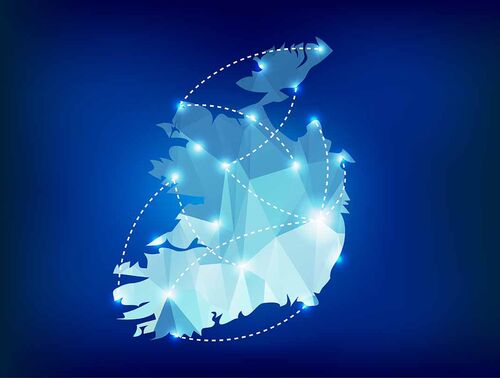At the INOU’s Annual Delegate Conference a motion was passed: The INOU calls on the Government to prioritise accessible, quality, affordable and comprehensive broadband coverage countrywide. This was enthusiastically supported by our members located in more rural areas, who face connectivity issues which in turn create challenges to the economic growth and development of these areas in an increasingly digital economy.
Remote working presents an opportunity for stemming the tide of rural decline. If workers will not need to remain close to an office building, they will be able to live anywhere in the country. This means that people who have moved to one of the larger urban centres for work will have the opportunity to return home should they wish. In addition people from larger urban centres may move to rural communities as the housing crisis prices them out of the cities.
Unfortunately, broadband coverage in rural Ireland is not yet capable of fully supporting a digital economy. As it stands 92% of Irish households have internet access, which is higher than the EU average of 89%. This figure is not uniform across the country, with geographical location affecting access, especially to the detriment of rural areas. As late as 2019, 20 percent in the border region, and 10 percent in the West of Ireland, reported that the reason that they did not have internet was due to lack of availability.
The National Broadband Plan was put in place in 2019 to fill in the gaps of broadband availability and connect 540,000 mainly rural homes and businesses with high-speed broadband. The plan has however come under some criticism, with the company enacting the plan, National Broadband Ireland being accused of not providing sufficient information on their plans and progress, and for having gaps in the first wave of broadband rollout. In addition to this there are worries over the pace of broadband rollout, with the rollout scheduled to take place over a seven-year period. NBI projects passing 200,000 premises connected before 2023, which will leave 63 percent of the premises still waiting to be connected.
Broadband issues however do not end at connection. The quality of broadband connection can vary wildly across the country, with most counties failing to reach the 25mbps (mega-bytes-per-second) necessary for businesses. According to a 2016 report from switcher.ie low broadband speeds were prevalent in border and western counties, with Longford (7.25mbps) and Leitrim (8.94mbps) faring worst. Low broadband speeds were not limited to this region with Kerry (14.02mbps), Kilkenny (12.88mbps), and Wexford (14.2mbps), having similar speeds.
The switcher.ie report demonstrated an urban-rural divide, with Dublin faring best overall with an average speed of 44.85mbps: sixteen of the top twenty areas for download speed were in Dublin. Galway demonstrated this divide better than any other county. The county had an average download speed of 20.24mbps. Galway City boasted the second fastest download speeds overall at 62.66mbps, while thirty kilometres away Inverin struggled with 2.63mbps.
There has been some degree of success, according to the M.Labs/cable.co.uk Worldwide Speed League average download speeds jumped from 23.87mbps in 2019 to 34.87mbps in 2020, but this rate of growth lags behind the rest of Europe. Ireland currently ranks 51st out of 221 countries and territories worldwide, only beating a handful of European countries, including Italy, Croatia, and Greece.
Affordability is an issue that has come up at a number of INOU events over the past year. According to cable.co.uk research, Ireland ranks 104th in the world for cost of fixed-line broadband, at an average price of €40 per month. Participants have noted that this cost, and the cost of the equipment required to both work and learn from home, are beyond the reach of many people on low and fixed incomes, including social welfare payments.
